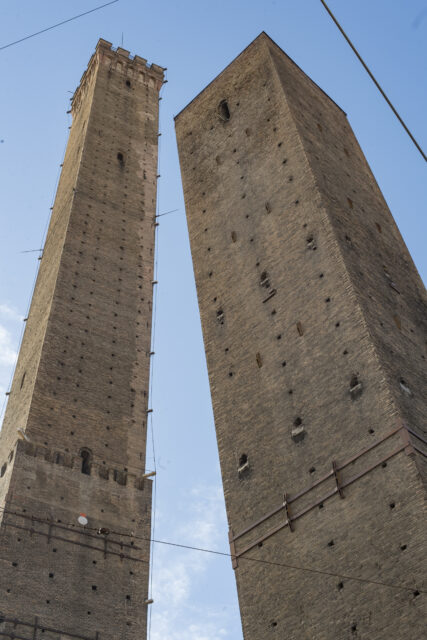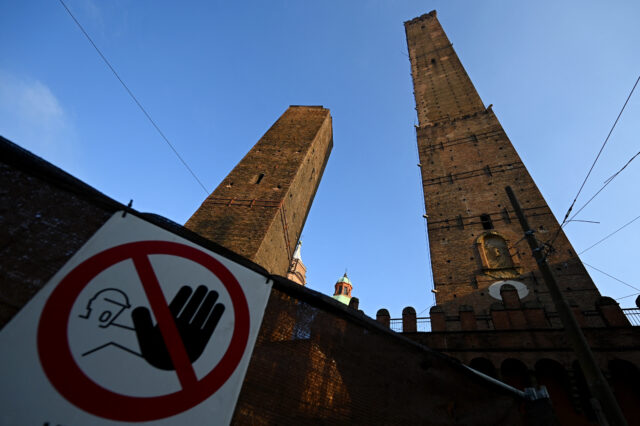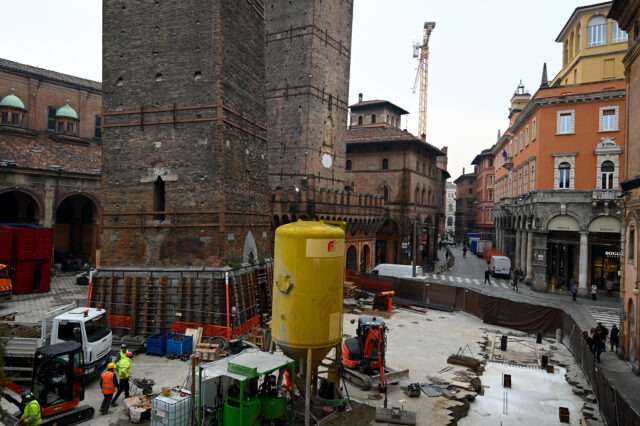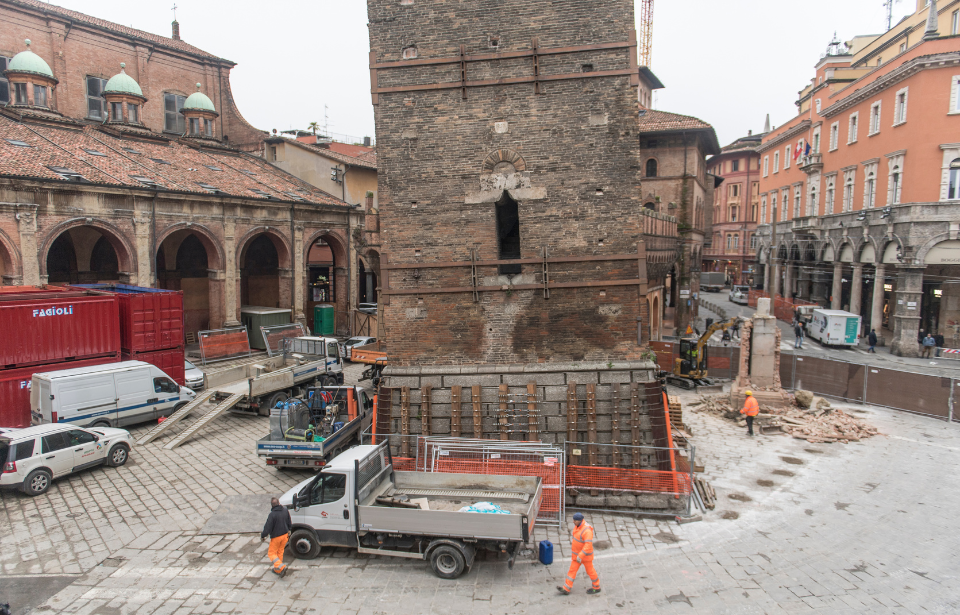A famous tower in Italy is leaning dangerously to one side, but it’s not the tower you may be thinking of. While the Tower of Pisa has earned the moniker of the “Leaning Tower of Pisa,” it is the Garisenda Tower in Bologna that has people worried it may be on the brink of collapse. Thankfully, Italy has dealt with this kind of thing before, and a plan is already in place to hopefully prevent any destruction of the tower.
The Garisenda Tower in Bologna
Garisenda Tower is part of a duo of towers that have become symbols for the city of Bologna, Italy. It is the smaller of the two at 48 meters tall, with its counterpart, known as Asineli Tower, standing close by at a height of 97.2 meters. The towers were named for the families who are credited with having constructed them between 1109 and 1119.

Garisenda Tower once measured 60 meters tall, but as early as the 14th century, it had to be lowered as the ground began to yield and the tower began to slant. The tower’s lean earned it some notable mentions in the work of famous poets, including in Dante Alighieri’s Divine Comedy and The Rhymes. While the lean has become its trademark characteristic, it has slowly been turning into a more pressing problem.
There are concerns about its stability
The Tower of Pisa is Italy’s most well-known leaning tower, which had a similar story to Garisenda. Constructed in the 12th century, this tower also began to lean by the 14th century as a result of the soft ground on which it was constructed. By 1990, the tower had reached a tilt of 5.5 degrees, ultimately causing architects and engineers to perform remedial work to stabilize the structure and reduce it to a tilt of 3.97 degrees.

Now, new fears have emerged that Garisenda Tower may be on the verge of collapse. Like the Tower of Pisa, stabilization studies were carried out on Garisenda which determined that the tower was at “high risk” of collapsing, its current lean sitting at four degrees. As a result, the tower and its counterpart, Asineli Tower, have been taped off from the public for safety purposes.
The government has a plan in place already
Thankfully, the government has a plan in place to correct and maintain the tower’s stability. Bologna’s mayor, Matteo Lepore, announced that they will be using the same method performed on the Tower of Pisa to stabilize the structure. The pylons and cables used on Pisa will be deployed alongside adapted scaffolding to try and prevent it from breaking down. His hope is that this work will allow Asinelli Tower to reopen to the public.

The project will use the two steel pylon structures used at Pisa to allow consolidation work to begin on the tower’s masonry. Then, injections of a lime-based mortar mix that is compatible with the original building’s construction will be used to reinforce the structure. The scaffolding is intended to tighten the tower, which will decrease the stress it suffers from at its base.
More from us: The Touching History of Phoenix, Arizona’s Mystery Castle
“In 2025 and 2026 there will be further consolidation and restoration work, which still needs to be planned,” Lepore said, but adapting the equipment for immediate use on Garisenda should only take “about six months.” The current safeguarding operation is slotted at a price of about $20 million.
